The kitchen is the heart of the home, a place where meals are prepared, families gather, and memories are made. However, it is also a space filled with potential hazards if safety precautions are not carefully followed. Proper placement of kitchen appliances is crucial to maintaining a safe environment and ensuring the efficient operation of these devices. This article provides comprehensive guidelines on how to safely place various appliances in your kitchen, reducing risks and enhancing functionality.
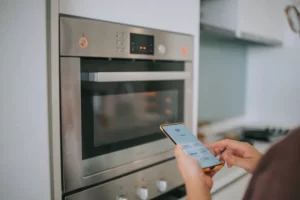
General Safety Guidelines
1. Adequate Ventilation
Ensuring proper ventilation in the kitchen is essential for both safety and comfort. Good ventilation helps to remove smoke, steam, and odors, which can otherwise create an unhealthy environment and potentially cause long-term damage to your home.
- Range Hoods: Install a range hood over your stove or cooktop to effectively capture and exhaust cooking fumes. Ensure the hood is vented to the outside, not recirculated, to maximize air quality.
- Windows and Exhaust Fans: Open windows and use exhaust fans to improve airflow, especially when cooking with high heat or using appliances that generate steam.
2. Fire Safety Measures
Fire safety is a paramount concern in the kitchen. By taking proactive steps, you can significantly reduce the risk of fires.
- Fire Extinguishers: Keep a multi-purpose fire extinguisher within easy reach, and ensure everyone in the household knows how to use it.
- Smoke Detectors: Install smoke detectors in or near the kitchen, and test them regularly to ensure they are functioning properly.
- Flammable Materials: Store flammable materials, such as dish towels, paper towels, and cooking oils, away from heat sources.
3. Electrical Safety Tips
Electrical safety is crucial to prevent shocks, burns, and fires. Follow these guidelines to keep your kitchen safe from electrical hazards.
- GFCI Outlets: Install Ground Fault Circuit Interrupter (GFCI) outlets near any water sources to protect against electrical shocks.
- Proper Wiring: Ensure all kitchen appliances are plugged into properly grounded outlets, and avoid overloading circuits.
- Cord Safety: Keep appliance cords away from hot surfaces and water. Replace frayed or damaged cords immediately to prevent electrical fires.
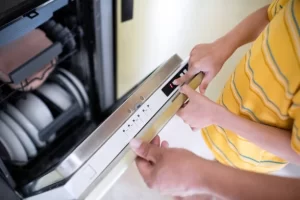
Placement of Major Appliances
1. Refrigerator
- Optimal Location for Energy Efficiency
Place your refrigerator in a cool, well-ventilated area, away from direct sunlight and heat sources like ovens and dishwashers. This helps maintain consistent internal temperatures and reduces energy consumption.
- Safe Clearance Space Around the Refrigerator
Allow adequate space around your refrigerator for air circulation. Typically, this means leaving at least a few inches of space on all sides and the back. Refer to the manufacturer’s guidelines for specific clearance requirements.
- Avoiding Blockages in Airflow
Ensure that the vents and coils at the back and bottom of the refrigerator are not blocked by dust or debris. Regularly clean these areas to maintain optimal performance and prevent overheating.
2. Oven and Stove
- Safe Distances from Combustible Materials
Install your oven and stove at a safe distance from combustible materials such as wooden cabinets, paper products, and curtains. A minimum distance of 18 inches is generally recommended to reduce fire risks.
- Proper Ventilation to Prevent Smoke and Odors
As with ventilation in general, proper ventilation above your stove or oven is essential. Use a range hood or an exhaust fan to effectively remove smoke, steam, and cooking odors from your kitchen.
- Installing Anti-Tip Brackets for Stoves
To prevent tipping accidents, especially with young children around, install anti-tip brackets on your stove. These brackets secure the appliance to the floor or wall, ensuring stability even when heavy pots and pans are placed on open oven doors.
3. Dishwasher
- Placement Near Sink for Easy Plumbing
Position your dishwasher close to the sink to simplify plumbing connections and reduce the risk of leaks. This proximity makes it easier to connect the appliance to the water supply and drainage system.
- Ensuring Level Installation to Prevent Leaks
Ensure your dishwasher is installed on a level surface. An uneven installation can cause water to pool at the bottom, potentially leading to leaks and inefficient operation.
- Keeping Electrical Connections Safe
Make sure that the electrical connections for your dishwasher are secure and protected from moisture. Use GFCI outlets and keep the plug and outlet away from areas where water might splash.
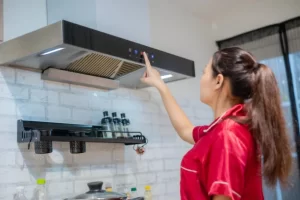
Placement of Small Appliances
1. Microwave
- Recommended Height for Safe Usage
Place the microwave at a height that is convenient for all users. Ideally, the microwave should be at or just
below shoulder level to avoid spills or burns when handling hot food. For most adults, this means placing it 3 to 5 feet above the floor.
- Ensuring Proper Ventilation
Microwaves need adequate ventilation to prevent overheating. Ensure there is sufficient space around the appliance as specified by the manufacturer, typically a few inches on all sides, to allow for proper air circulation.
- Safe Surface for Placement to Avoid Tipping
Place the microwave on a stable, level surface to prevent it from tipping over. Ensure that the surface can support the weight of the microwave and its contents. Avoid placing it near the edge of counters or shelves.
2. Coffee Maker
- Keeping Away from the Sink to Avoid Water Damage
Place your coffee maker away from the sink to minimize the risk of water damage. This helps prevent accidental spills or splashes from compromising the electrical components of the appliance.
- Safe Cord Management to Prevent Tripping
Ensure that the cord is neatly organized and does not hang over the edge of the counter where it could be accidentally pulled or tripped over. Use cord clips or organizers to keep the cord secure and out of the way.
3. Toaster and Toaster Oven
- Safe Distance from Flammable Materials
Place your toaster or toaster oven at a safe distance from flammable materials such as paper towels, curtains, and wooden cabinets. Maintain a clearance of at least several inches on all sides to prevent fire hazards.
- Ensuring a Clean Surface to Prevent Crumbs from Causing Fires
Regularly clean your toaster or toaster oven to remove crumbs and food particles that can accumulate and pose a fire risk. Place the appliance on a clean, heat-resistant surface to further reduce the chance of fire.
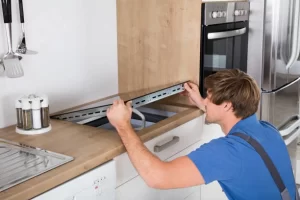
Maintenance and Regular Checks
1. Importance of Regular Cleaning and Maintenance
Regular cleaning and maintenance of your kitchen appliances are essential for safety and efficiency. Grease and grime buildup can lead to fires and reduce the performance of your appliances.
- Refrigerator: Clean the coils and defrost the freezer regularly.
- Oven and Stove: Clean spills immediately and check for gas leaks.
- Dishwasher: Run a cleaning cycle monthly to prevent mold and buildup.
2. Checking for Wear and Tear on Cords and Plugs
Inspect the cords and plugs of your appliances regularly for signs of wear and tear. Frayed wires or damaged plugs can lead to electrical shocks and fires. Replace any damaged parts immediately.
3. Scheduling Professional Inspections for Major Appliances
For major appliances like ovens, refrigerators, and dishwashers, schedule professional inspections periodically. Technicians can identify and address potential issues before they become serious problems.
Maintaining a safe kitchen environment involves careful placement and regular maintenance of your appliances. By following these guidelines, you can minimize risks and ensure that your kitchen remains a safe, efficient, and enjoyable space for cooking and gathering.
♦ Tools to help make your kitchen safe
Fire Extinguisher: Kidde Fire Extinguisher for Home
Smoke Detectors: SITERWELL Smoke Detector
Heat-Resistant Surface Mats: Silicone Mats for Kitchen Counter
GFCI Outlets: ELECTECK 10 Pack GFCI Outlets 15 Amp

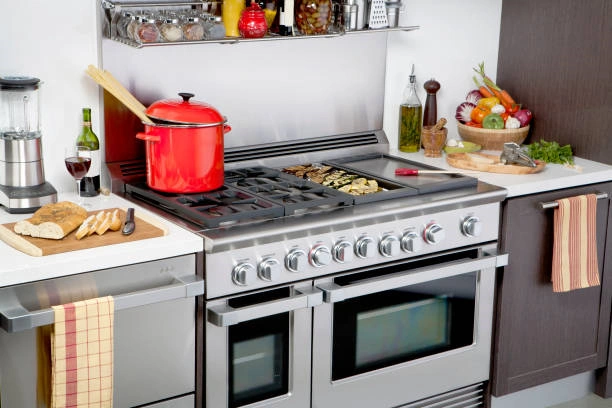
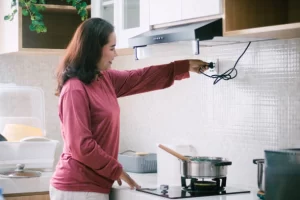








Thanks to this guide, I feel more confident in my ability to design a functional and safe kitchen layout.